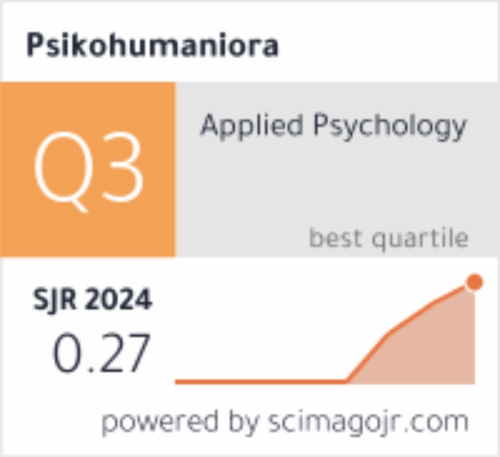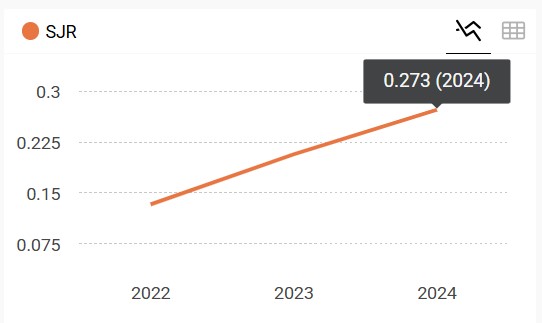Proses Pengambilan Keputusan Pembelian di Toko Daring: Peran Faktor Psikologis Persepsi Kualitas Produk dan Tingkat Kepercayaan
DOI:
https://doi.org/10.21580/pjpp.v2i2.2296Keywords:
consumer trust, online buying, purchase decision, product qualityAbstract
Abstract: As changes in purchasing behavior from conventional stores into online stores, fundamental things in consumer psychological processes such as quality perceptions and trust levels need to be reexamined. This research tries to know the contribution of product quality perception and consumer trust in shaping purchasing decision at online store. Sampling in this research was done by incidental sampling technique. Criteria subject used as a sample of research is consumers aged 18-30 years and have been making purchases in online stores at least three times. By using this technique, the subject is 485 people. The results show that product quality and consumer trust are a positive predictor of purchasing decisions at online stores. This study provides evidence that on online purchases, buyers consider almost uniformly the quality of products and online stores that sell products before making a purchase.
Abstrak: Seiring berubahnya tingkah laku pembelian dari toko konvesionalmenuju toko daring, maka hal mendasar dalam proses psikologis konsumen seperti persepsi kualitas dan tingkat kepercayaan perlu dikaji ulang. Penelitian ini mencoba mengetahui kontribusi persepsi kualitas produk dan kepercayaan konsumen dalam membentuk keputusan pembelian di toko daring. Pengambilan sampel dalam penelitian ini dilakukan dengan teknik incidental sampling. Kriteria subjek yang dijadikan sebagai sampel penelitian adalah konsumen berusia 18 – 30 tahun dan sudah pernah melakukan pembelian di toko daring minimal tiga kali. Dengan menggunakan teknik tersebut diperoleh subjek 485 orang. Hasil penelitian menunjukkan bahwa kualitas produk dan kepercayaan konsumen menjadi prediktor positif terhadap keputusan pembelian pada toko daring. Penelitian ini memberikan bukti bahwa pada pembelian daring, pembeli mempertimbangkan secara hampir seimbang kualitas produk dan toko daring yang menjual produk sebelum melakukan pembelian.
Downloads
References
Alfred, O. (2013). Influences of Price And Quality On Consumer Purchase Of Mobile Phone In The Kumasi Metropolis In Ghana A Comparative Study. European Journal of Business and Management, 5(1), 179–199.
Buaprommee, N., & Polyorat, K. (2016). The antecedents of purchase intention of meat with traceability in Thai consumers. Asia Pacific Management Review. https://doi.org/Article in Asia Pacific Management Review • June 2016 with 24 Reads DOI: 10.1016/j.apmrv.2016.03.001
Chen, Y.-H., & Barnes, S. (2007). Initial trust and online buyer behaviour. Industrial Management & Data Systems, 107(1), 21–36. https://doi.org/10.1108/02635570710719034
Ditjen Aptika. (2015). Nilai transaksi pembelian produk secara online tahun 2015. Retrieved from Nilai transaksi pembelian produk secara online tahun 2015
al-Ekam, J. M. E., Mat, N. K. N., Salleh, S. M., Binti, N., Baharom, Teh, T. R. B. T., … Hussain, N. E. B. (2012). The Influence of Trust, Advertising, Family on Intention and Actual Purchase of Local Brand in Yemen. American Journal of Economics, (Special Issue), 64–68. https://doi.org/10.5923/j.economics.20120001.15
Ferdinand, A. (2006). Structural equation modeling. Semarang: Badan Penerbit Universitas Diponegoro.
Han, H., & Hyun, S. S. (2015). Customer retention in the medical tourism industry: Impact of quality, satisfaction, trust, and price reasonableness. Tourism Management, 46(February 2015), 20–29. https://doi.org/10.1016/j.tourman.2014.06.003
Juju, D. (2010). Cara Mudah Buka Toko Online dengan Wordpress + WP E-Commerce. Yogyakarta: CV Andi Offset.
Kalicharan, H. D. (2014). The Effect And Influence Of Country-Of- Origin On Consumer s ’ Perception Of product quality and purchasing intentions. International Business & Economics Research Journal, 13(5), 897–902. https://doi.org/10.19030/iber.v13i5.8760
Kotler, P. (2000). Marketing Management , Millenium Edition. Marketing Management. New Jersey: Prentice-Hall, Inc. https://doi.org/10.1016/0024-6301(90)90145-T
Kotler, P. (2015). Manajamen pemasaran. Jakarta: Indeks Gramedia.
Kotler, P., & Armstrong, G. (2010). Principles of Marketing. World Wide Web Internet And Web Information Systems, 785. https://doi.org/10.2307/1250103
Kotler, P., & Keller, K. L. (2007). Manajemen pemasaran. (J. Purba, Ed.) (12th ed.). PT. Indeks.
Lee, E.-J., & Shin, S. Y. (2014). When do consumers buy online product reviews? Effects of review quality, product type, and reviewer’s photo. Computers in Human Behavior, 31(1), 356–366. https://doi.org/10.1016/j.chb.2013.10.050
Lembang, R. D., & Sugiono, S. (2010). Analisis pengaruh kualitas produk, harga, promosi, dan cuaca terhadap keputusan pembelian teh siap minum dalam kemasan merek Teh Botol Sosro. Semarang: Universitas Diponegoro.
Loekamto, A. (2000). Implementasi Technology Acceptance Modelss ( TAM ) Dalam Online Shopping. Telematic Journal, III.
Lu, B., Fan, W., & Zhou, M. (2016). Social presence, trust, and social commerce purchase intention: An empirical research. Computers in Human Behavior, 56, 225–237. https://doi.org/10.1016/j.chb.2015.11.057
Lu, Y., Zhao, L., & Wang, B. (2010). From virtual community members to C2C e-commerce buyers: Trust in virtual communities and its effect on consumers’ purchase intention. Electronic Commerce Research and Applications, 9(4), 346–360. https://doi.org/10.1016/j.elerap.2009.07.003
McKnight, Choudhury, K. (2002). Developing and Vaidating Trust Measures for E-Commerce, 334–359.
McKnight, D. H., & Chervany, N. L. (2002). What Trust Means in E-Commerce Customer Relationships: An Interdisciplinary Conceptual Typology. International Journal of Electronic Commerce, 6(2), 35–59. https://doi.org/Article
McKnight, D. H., Choudhury, V., & Kacmarc, C. (2002). The impact of initial consumer trust on intentions to transact with a web site: A strust building model. Journal of Strategic Information Systems, 11, 297–323.
Nugroho, R. (2015). Pasar Belanja Online Indonesia Berpeluang Dua Kali Lipat di Tahun 2015! 23 Januari.
Sahney, S., Ghosh, K., & Shrivastava, A. (2013). Conceptualizing Consumer “Trust” in Online Buying Behavior: An Empirical Inquiry and Model Development in Indian Context. Journal of Asia Business Studies, 7(3), 278–298. Retrieved from https://www.emeraldinsight.com/doi/abs/10.1108/JABS-Jul-2011-0038?mobileUi=0&journalCode=jabs
Shaharudin, M. R., Mansor, S. W., Hassan, A. A., Omar, M. W., & Harun, E. H. (2011). The relationship between product quality and purchase intention: The case of Malaysia’s national motorcycle/scooter manufacturer. African Journal of Business Management, 5(20), 8163–8176. https://doi.org/http://dx.doi.org/10.5897/AJBM11.267
Simmonds, G., & Spence, C. (2016). Thinking inside the box: How seeing products on, or through, the packaging influences consumer perceptions and purchase behaviour. Food Quality and Preference, 62. https://doi.org/10.1016/j.foodqual.2016.11.010
Syaiful, I. A., & Sari, A. V. K. (2016). Faktor-faktor yang Memengaruhi Perilaku Konsumen dalam Bertransaksi di Media Sosial. Psikohumaniora: Jurnal Penelitian Psikologi, 1(1), 95–112. https://doi.org/DOI: http://dx.doi.org/10.21580/pjpp.v1i1.904
Yoon, S. (2002). No TitleThe Antecedents and Consequences of Trust in Online-Purchase Decisions. Journal of Interactive Marketing, 16(2), 47–63. https://doi.org/10.1002/dir.10008
Yulianda, S., & Handayani, T. (2015). The Effect of Two Aspects-Quality Products and Consumers Psychology - Toward the Purchase Decisions of Samsung Mobile Phone. Mediterranean Journal of Social Sciences, 6(5), 203–208. https://doi.org/10.5901/mjss.2015.v6n5s5p203
Downloads
Published
How to Cite
Issue
Section
License
The copyright of the accepted article shall be assigned to the publisher of the journal. The intended copyright includes the right to publish the article in various forms (including reprints). The journal maintains the publishing rights to published articles.
In line with the license, authors and any users (readers and other researchers) are allowed to share and adapt the material only for non-commercial purposes. In addition, the material must be given appropriate credit, provided with a link to the license, and indicated if changes were made. If authors remix, transform, or build upon the material, authors must distribute their contributions under the same license as the original.




